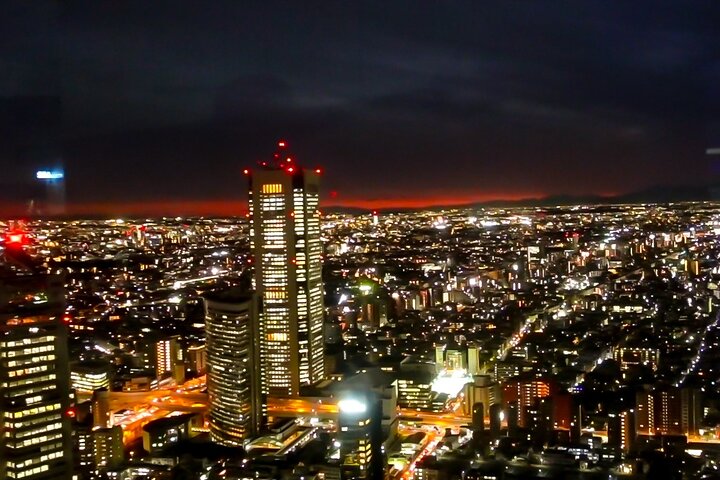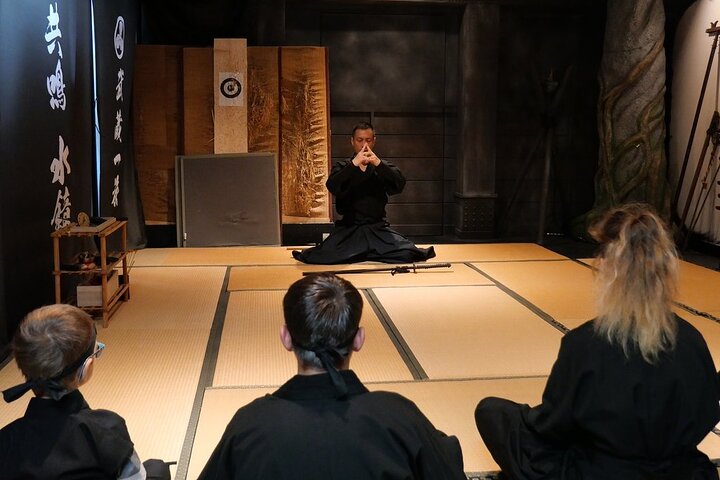Why choose this Tokyo tour ?
This 4hr walking tour includes a 2hr Sumo Show Dinner at Yokozuna Tonkatsu Dosukoi Tanaka. You can learn the sumo world’s behind-the-scenes stories and their daily life and enjoy Chanko-nabe hot pot!
This is a very rare opportunity to play sumo with retired sumo wrestlers!
Before your dinner, you will go on a walking tour with our licensed guide! Your guide will drop you off at Yokozuna Tonkatsu Dosukoi Tanaka after a 4 hour walking tour.
Start time: Your start time for the dinner will be at 7pm. The estimated time for the dinner will be about 4 hours from the start of the tour.
You can customize your tour directly with the guide after placing your reservation.
Please craft your itinerary by choosing 2 to 3 spots on the ‘what to expect’ or ‘itinerary’ list.
Make the most of your Tokyo adventure
What makes Tokyo 6hr Private Guided Tour & Sumo Show Dinner a unique experience ?
This tour will allow you to explore Tokyo more efficiently in one day. Meet at your hotel, then move to anywhere you want.
The current Imperial Palace is located on the former site of Edo Castle, a large park area surrounded by moats and massive stone walls in the center of Tokyo, a short walk from Tokyo Station. It is the residence of Japan’s Imperial Family.
Edo Castle used to be the seat of the Tokugawa shogun who ruled Japan from 1603 until 1867. In 1868, the shogunate was overthrown, and the country’s capital and imperial residence were moved from Kyoto to Tokyo. In 1888 construction of a new Imperial Palace was completed. The palace was once destroyed during World War Two, and rebuilt in the same style, afterwards.
Shinjuku Gyoen is one of Tokyo’s largest and most popular parks. Located a short walk from Shinjuku Station, the park’s spacious lawns, meandering walking paths and tranquil scenery provide a relaxing escape from the busy urban center around it. In spring Shinjuku Gyoen becomes one of the best places in the city to see cherry blossoms.
This tour will allow you to short explore Tokyo. Meet at your hotel, visit Sumo stable then move to anywhere you want.
Explore the old fish market in Tokyo! Try lots of fresh fish!
Meiji Shrine (明治神宮, Meiji Jingū) is a shrine dedicated to the deified spirits of Emperor Meiji and his consort, Empress Shoken. Located just beside the JR Yamanote Line’s busy Harajuku Station, Meiji Shrine and the adjacent Yoyogi Park make up a large forested area within the densely built-up city. The spacious shrine grounds offer walking paths that are great for a relaxing stroll.
The shrine was completed and dedicated to the Emperor Meiji and the Empress Shoken in 1920, eight years after the passing of the emperor and six years after the passing of the empress. The shrine was destroyed during the Second World War but was rebuilt shortly thereafter.
Rikugien is often considered Tokyo’s most beautiful Japanese landscape garden alongside Koishikawa Korakuen. Built around 1700 for the 5th Tokugawa Shogun, Rikugien literally means “six poems garden” and reproduces in miniature 88 scenes from famous poems. The garden is a good example of an Edo Period strolling garden and features a large central pond surrounded by manmade hills and forested areas, all connected by a network of trails.
Akihabara (秋葉原), also called Akiba after a former local shrine, is a district in central Tokyo that is famous for its many electronics shops. In more recent years, Akihabara has gained recognition as the center of Japan’s otaku (diehard fan) culture, and many shops and establishments devoted to anime and manga are now dispersed among the electronic stores in the district. On Sundays, Chuo Dori, the main street through the district, is closed to car traffic from 13:00 to 18:00 (until 17:00 from October through March).
Koishikawa Korakuen (小石川後楽園, Koishikawa Kōrakuen) is one of Tokyo’s oldest and best Japanese gardens. It was built in the early Edo Period (1600-1867) at the Tokyo residence of the Mito branch of the ruling Tokugawa family. Like its namesake in Okayama, the garden was named Korakuen after a poem encouraging a ruler to enjoy pleasure only after achieving happiness for his people. Koishikawa is the district in which the garden is located in.
Hama Rikyu is a large, attractive landscape garden in central Tokyo. Located alongside Tokyo Bay, Hama Rikyu features seawater ponds which change level with the tides, and a teahouse on an island where visitors can rest and enjoy the scenery. The traditionally styled garden stands in stark contrast to the skyscrapers of the adjacent Shiodome district.
The Tokyo National Museum (東京国立博物館, Tōkyō Kokuritsu Hakubutsukan) is the oldest and largest of Japan’s top-level national museums, which also include the Kyoto National Museum, the Nara National Museum and the Kyushu National Museum. It was originally established in 1972 at Yushima Seido Shrine and moved to its current location in Ueno Park a few years later.
The Tokyo National Museum features one of the largest and best collections of art and archeological artifacts in Japan, made up of over 110,000 individual items including nearly a hundred national treasures. At any one time, about 4000 different items from the permanent museum collection are on display. In addition, visiting temporary exhibitions are also held regularly. Good English information and audio guides are available.
See the beauty of Tokyo from up high! Enjoy looking over Tokyo from 229m in the sky.
Sensoji (浅草寺, Sensōji, also known as Asakusa Kannon Temple) is a Buddhist temple located in Asakusa. It is one of Tokyo’s most colorful and popular temples.
The legend says that in the year 628, two brothers fished a statue of Kannon, the goddess of mercy, out of the Sumida River, and even though they put the statue back into the river, it always returned to them. Consequently, Sensoji was built nearby for the goddess of Kannon. The temple was completed in 645, making it Tokyo’s oldest temple.
Rikugien (六義園) is often considered Tokyo’s most beautiful Japanese landscape garden alongside Koishikawa Korakuen. Built around 1700 for the 5th Tokugawa Shogun, Rikugien literally means “six poems garden” and reproduces in miniature 88 scenes from famous poems. The garden is a good example of an Edo Period strolling garden and features a large central pond surrounded by manmade hills and forested areas, all connected by a network of trails.
Yoyogi Park (代々木公園, Yoyogi Kōen) is one of Tokyo’s largest city parks, featuring wide lawns, ponds and forested areas. It is a great place for jogging, picnicking and other outdoor activities.
Although Yoyogi Park has relatively few cherry trees compared to other sites in Tokyo, it makes for a nice cherry blossom viewing spot in spring. Furthermore, it is known for its ginko tree forest, which turns intensely golden in autumn.
Tour Description & Additional Info:
- Service animals allowed
- Public transportation options are available nearby
- Infants and small children can ride in a pram or stroller
- All areas and surfaces are wheelchair accessible
- Transportation options are wheelchair accessible
- Wheelchair accessible
- Suitable for all physical fitness levels
Options To Choose for Your Trip:
- Dinner
Add
Dinner
Pickup included
Tokyo 6hr Private Guided Tour & Sumo Show Dinner Inclusions:
Included with Your Ticket
- Dinner at Yokozuna Tonkatsu Dosukoi Tanaka
- Meet on foot with Licensed Local English Speaking Guide in designated Tokyo area
- Customizable Walking Tour of your choice of 2-3 sites from ‘What to expect’ list’
Not Included
- Private Vehicle, Transportation fees, Entrance fees, and any other personal expenses
- You cannot combine multiple tour groups.
- Guide Entry fees are only covered for sights listed under What to Expect.
Trending Tokyo Nearby Tours Likely To Sell Out
Special Instructions:
- This Tour is Provided by Japan Guide Agency.
- Tour Timezone & Starts at Asia/Tokyo.
- Mobile or paper ticket accepted.
- All sales are final. No refund is available for cancellations.
- Minimum 1 Travelers is required to book.
- Maximum 10 Travelers is accepted for booking.









